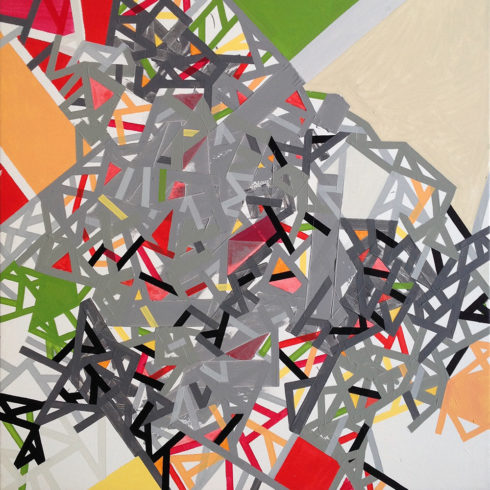
Born in 1972 in France, Philippe Halaburda studied graphic design in Paris. Initially his work was more figurative during his life in Paris from 1993-1995 and in Switzerland from 1996-2000. Later he moved to Aix-en-Provence, where his work became increasingly abstract, light, bold and colorful. In 2012, he completely transitioned into playful, unpredictable abstraction creating an emotionally charged explosion of colorful shapes and grids against white space. Influenced by living and working in New York City since 2016, he keeps transforming his style in exciting and innovative ways. Whole urban environments are being encoded into his own visual language, maps and frameworks that invite the viewer to discover their own subconscious feelings, dreams and experiences from living and interacting in the city and their relation to the collective. His work has been compared to that of Russian avant-garde artist Kazimir Malevich (1878-1935) who was a representative of Constructivism and Suprematism, influenced by Cubism and Futurism. Malevich worked only with “pure” forms, such as square, circle and cross painted in primary colors against white space and resembling aerial imagery taken from the sky. Philippe Halaburda’s artwork is very similar within the fundamentals, however not as schematic as seen in Malevich’s work. It is characterized by an enormous dynamism and bold presence telling stories and exploring social tensions and relationships. The artist uses all kinds of mediums, be it canvas, photos, digital media or plexiglass as well as his own techniques of replacing paint brushes with rubber spatulas to create the imagery, topography and abstract algorithms of data he collects transforming them into new worlds of monumental scales. The beauty of his work lies in the poetic and spontaneous expression of landscapes transformed into a modern visual code that the artist keeps inventing and perfecting. Philippe Halaburda has been exhibited throughout Europe with his first solo representation by a gallery in the United States (Peyton Wright gallery in Santa Fe, NM). Since then, he has been represented by various American and French galleries.












